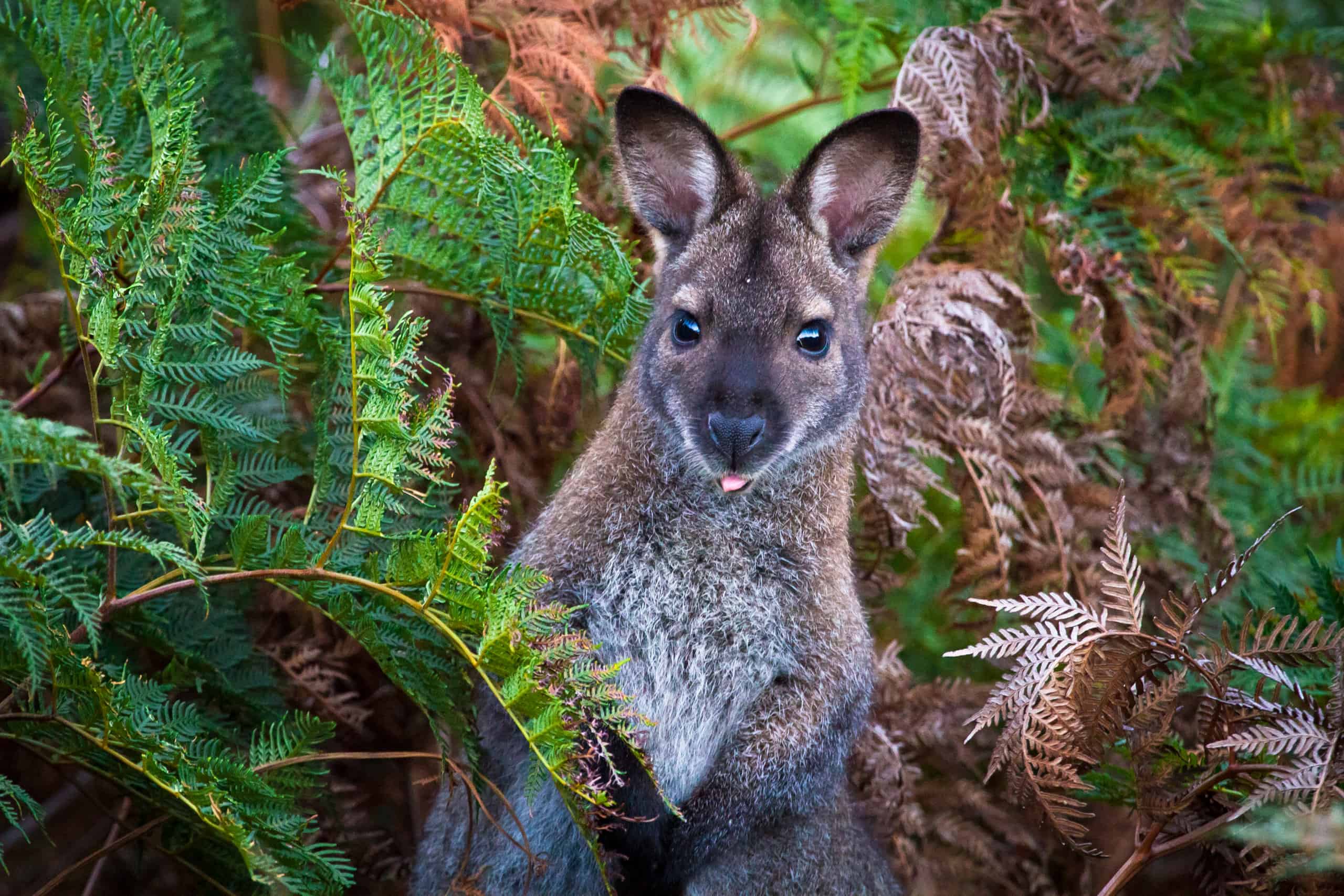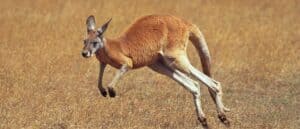Wallabies are marsupials and members of the kangaroo family. These large rabbit-like creatures are native to Australia and neighboring islands. Australians often see them hopping about, munching on grass, leaves, and fruit.
Have you ever wondered whether wallabies live on continents outside of Australia? Or whether these marsupials are strictly herbivores? Discover 10 incredible wallaby facts you may have never heard before!
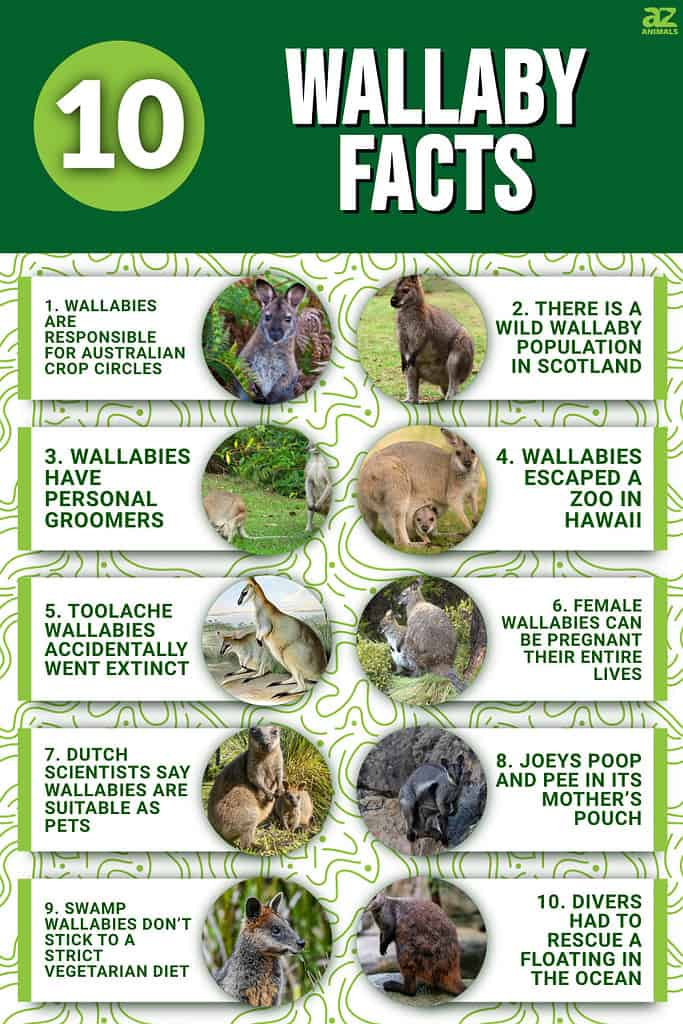
1. Wallabies are Responsible for Australian Crop Circles
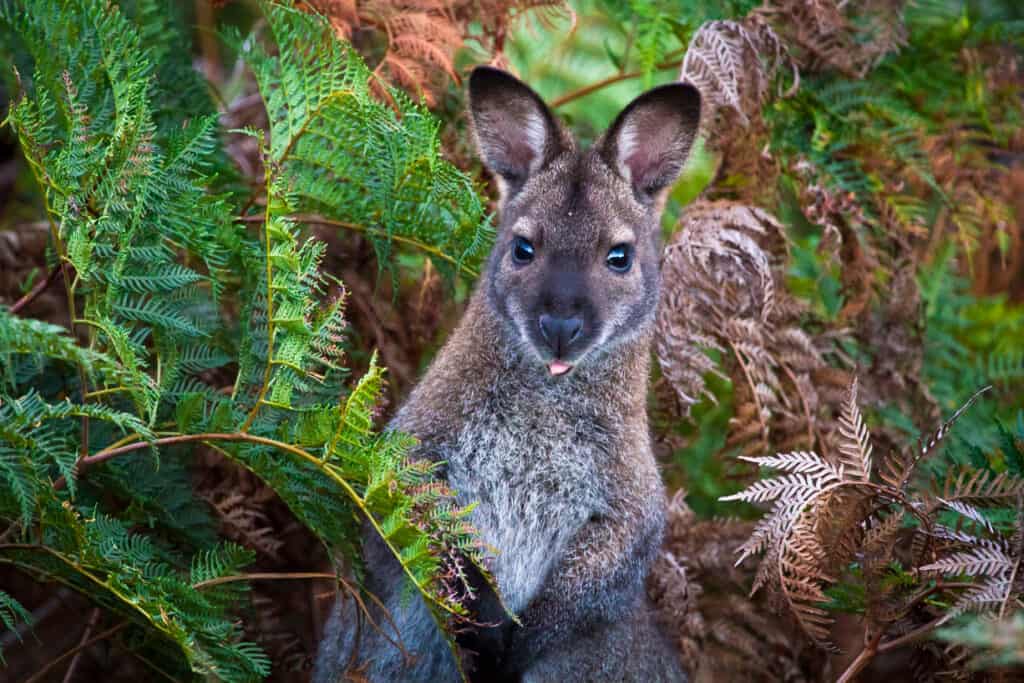
Wallabies create crop circles in Australia.
©Kevin Wells Photography/Shutterstock.com
Australia supplies 50% of the world’s opium for legal painkillers. Opium is made from the fluid inside poppy plants which grow in large fields across the continent. The poppy industry has a rather unusual problem, though, which leads us to our first and favorite wallaby fact:
Mobs of wallabies enjoy running through these fields and eating the poppy plants, which apparently make them high. They then hop around in circles before passing out. Their erratic hopping forms crop circles! At least in Australia, crop circles are not made by aliens.
2. There is a Wild Wallaby Population in Scotland
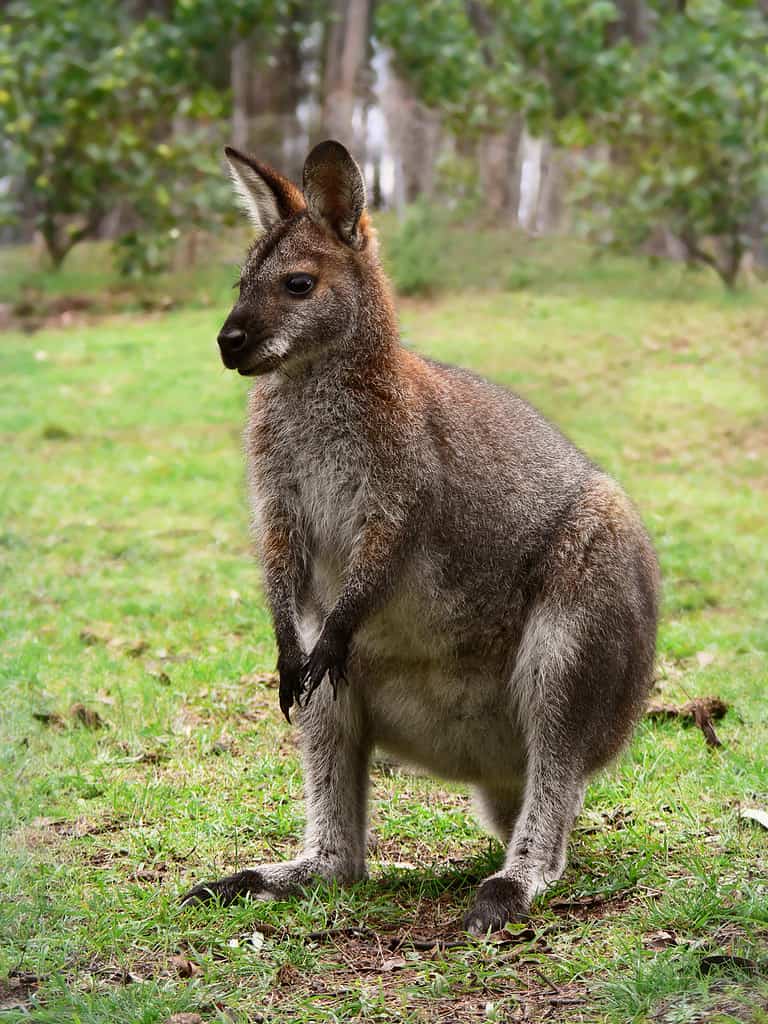
The Island of Inchconnachan in Loch Lomond is remote and only accessible by boat.
Wallabies have been in Scotland since the 1940s. Fiona Gore, Countess of Arran, brought them to Inchconnachan, an island in Loch Lomond. The island is remote and only accessible by kayak or speed boat (Lady Fiona was a powerboating racer known as the “fastest granny on water.”)
These wild wallabies live a peaceful life to themselves, except for the occasional tourist hoping to get some good photos. However, there is some debate about whether they threaten the wood grouse population. But seeing as the two have lived in cohabitation for over 60 years, it is unlikely.
3. Wallabies Have Personal Groomers

Sometimes parasites stay on a wallaby for a while, causing the animal discomfort.
Ectoparasites like ticks frequently pester wallabies in the wild. Ticks attach themselves to a wallaby’s neck and ears when it bends down to eat or drink. Sometimes these parasites stay for a while, engorging themselves and causing the animal discomfort.
Crows are extremely intelligent and frequently perform helpful acts for animals in need. This includes picking ticks off of unsuspecting wallabies. While these marsupials get aggravated by this act, they definitely benefit from it in the long run. Crows are also known to do this with other animals like deer and hippos. Evidence suggests they form symbiotic cleaning relationships with banteng cows.
4. Wallabies Escaped a Zoo in Hawaii
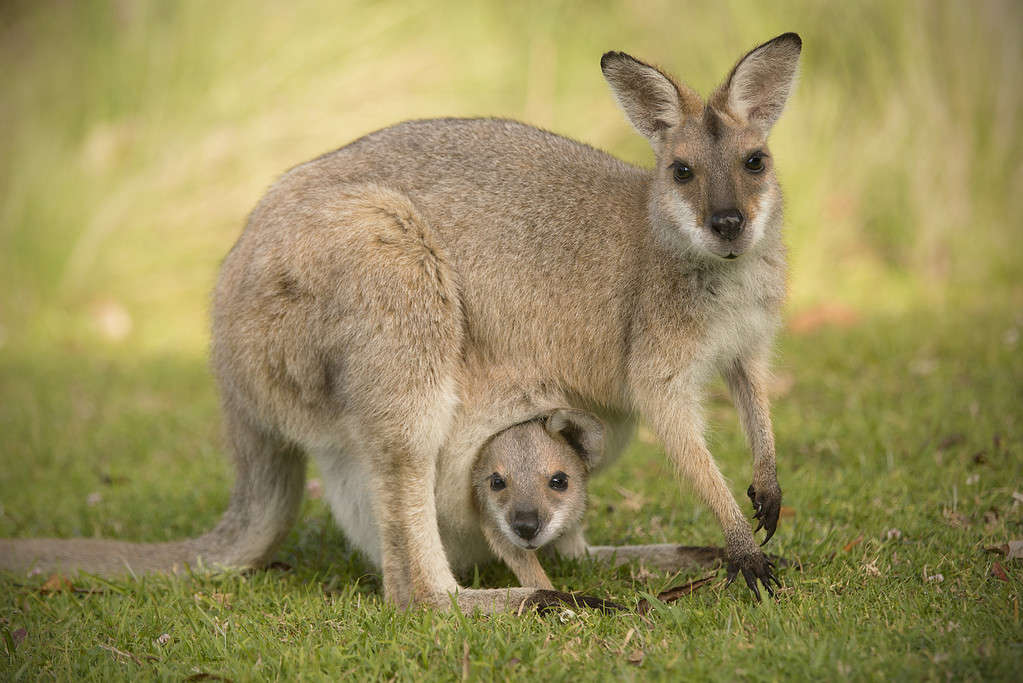
Wallabies breed very quickly and soon began their own feral population.
©Shmenny50/ via Getty Images
Here’s an interesting wallaby fact: Humans brought wallabies to a zoo in Hawaii during the early 1900s. In 1916, a small population of rock wallabies escaped the zoo, never to be captured. Because wallabies breed very quickly, the escapees soon began their own feral population. Today, the wallabies are protected by state law, and you can find them in the Kalihi Valley in Oahu. Another similar incidence occurred near Paris in the 1970s. Due to this incident, over 100 wallabies are living in a nearby forest.
5. Toolache Wallabies Accidentally Went Extinct
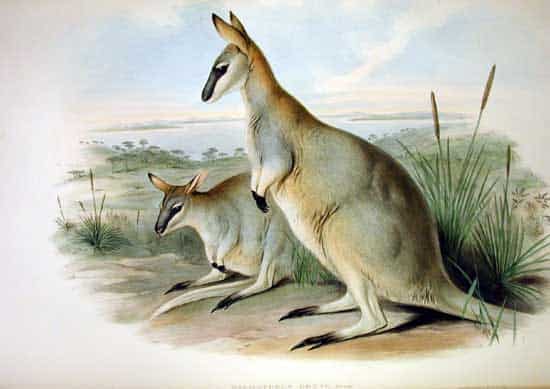
Conservationists tried capturing the remaining toolache wallabies to save them.
©John Gould, Public domain – Original
Toolache wallabies were fast, sociable marsupials that inhabited parts of southeastern Australia. Their numbers started dwindling at the first sign of European settlers due to the introduction of the red fox and the destruction of their swamp homes. Hunters also killed these creatures for sport and their pelt.
Conservationists attempted to capture the remaining 14 in the wild and breed them in captivity to save them from extinction. Their attempt did not go as planned. While in the process of capturing them, ten were accidentally killed. The other four survived in captivity until 1939.
6. Female Wallabies Can be Pregnant Their Entire Lives
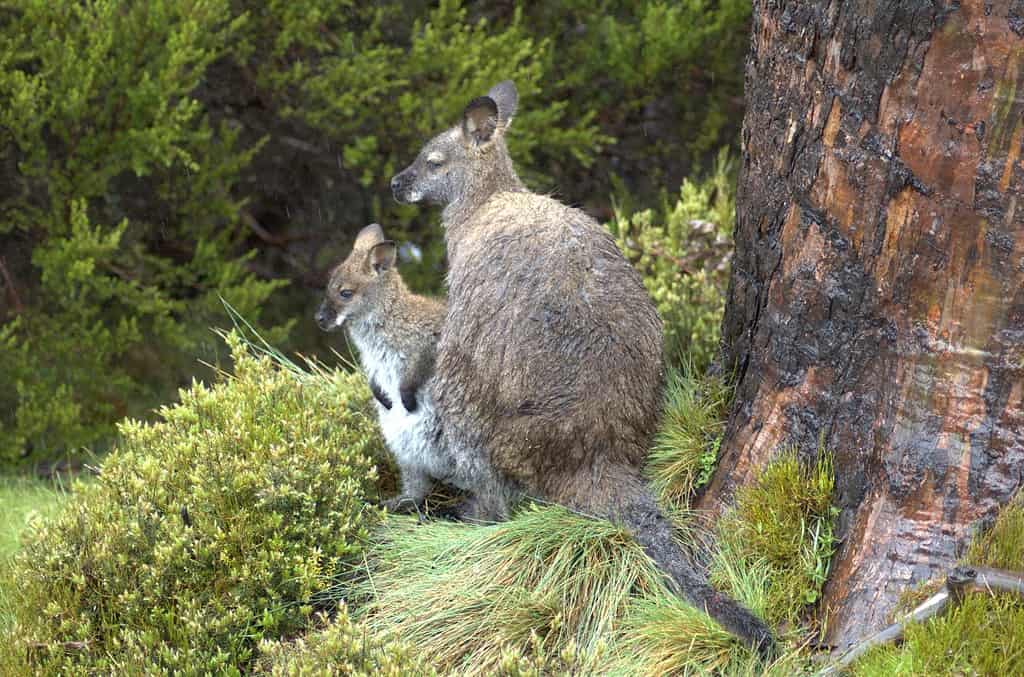
How’s that for a wallaby fact!? Adult female wallabies are almost always pregnant. They can even conceive another litter before they give birth to the current litter!
You may be wondering how this is possible, but wallaby anatomy is much different from humans. The females come equipped with three vaginas and two uteri. Mothers-to-be will often conceive another baby one to two days before giving birth.
Besides the European brown hare, wallabies are the only animals that can become pregnant while already pregnant. Also, the gestation period for a wallaby fetus is only 28 days.
7. Dutch Scientists say Wallabies are Suitable as Pets
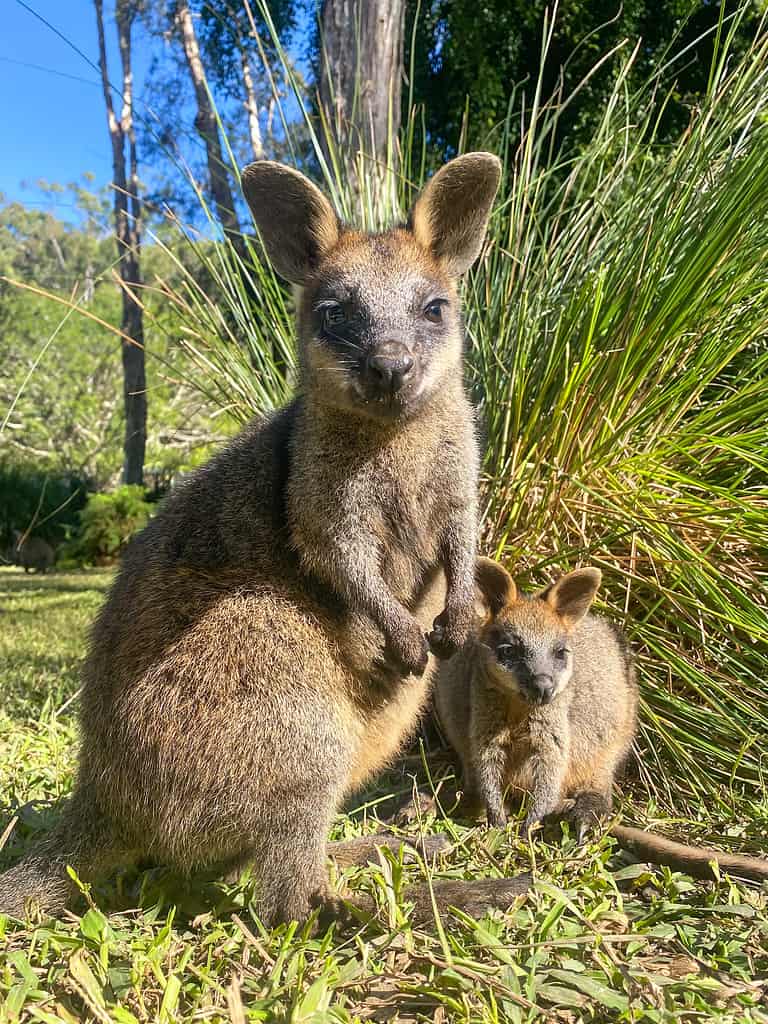
Certain species of wallabies were found to make excellent pets.
©Jo Staveley/ via Getty Images
Forget dogs; get a wallaby! Officials in the Netherlands decided to tackle the growing problem of people owning exotic pets by introducing an animal welfare policy. The policy states that individuals could own pets that didn’t require any special knowledge or skill.
Researchers conducted a study using objective statistical data to determine what animals would qualify as a pet. They found that certain species of wallabies would make excellent pets. Other unusual animals on this list included sika deer and llamas.
8. Joeys Poop and Pee in Their Mother’s Pouch
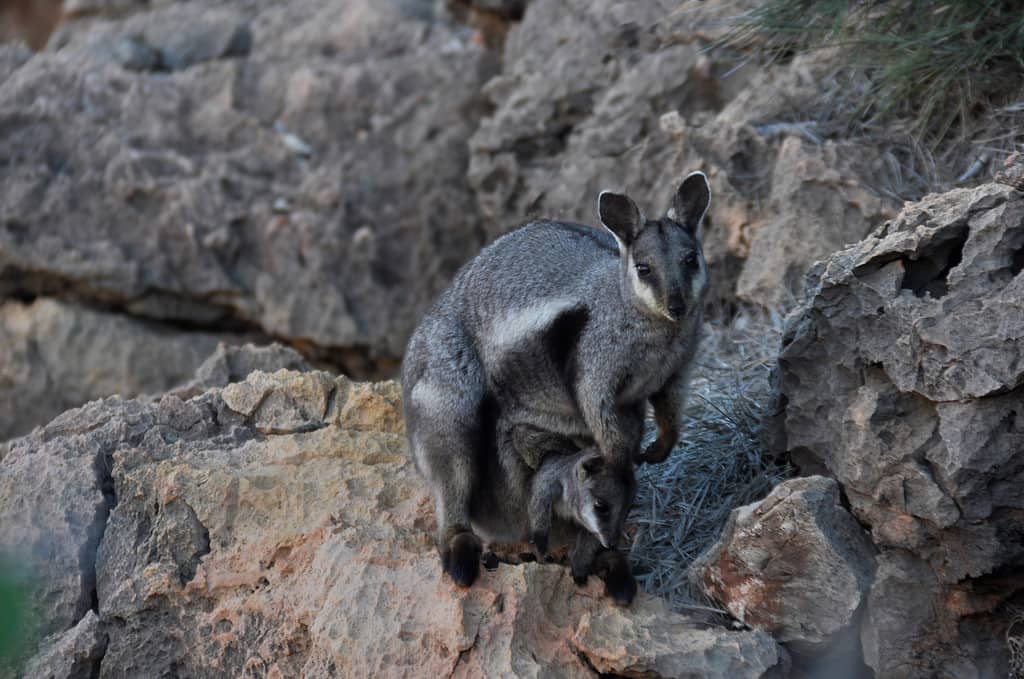
Baby wallabies are very fragile. They climb into their mother’s pouch until ready to face the world.
©Samantha Haebich/ via Getty Images
Baby wallabies, or joeys, are born after only 28 days of gestation. They are very fragile and underdeveloped. Minutes after being born, the joey climbs into its mother’s pouch and nurses safely until it’s ready to face the world. Because the baby can’t go anywhere for the first few months, it will pee and poop in the pouch.
A mother wallaby’s pouch can get quite dirty, as you can imagine. She will frequently clean her pouch by licking out dirt and other matter.
9. Swamp Wallabies Don’t Stick to a Strict Vegetarian Diet
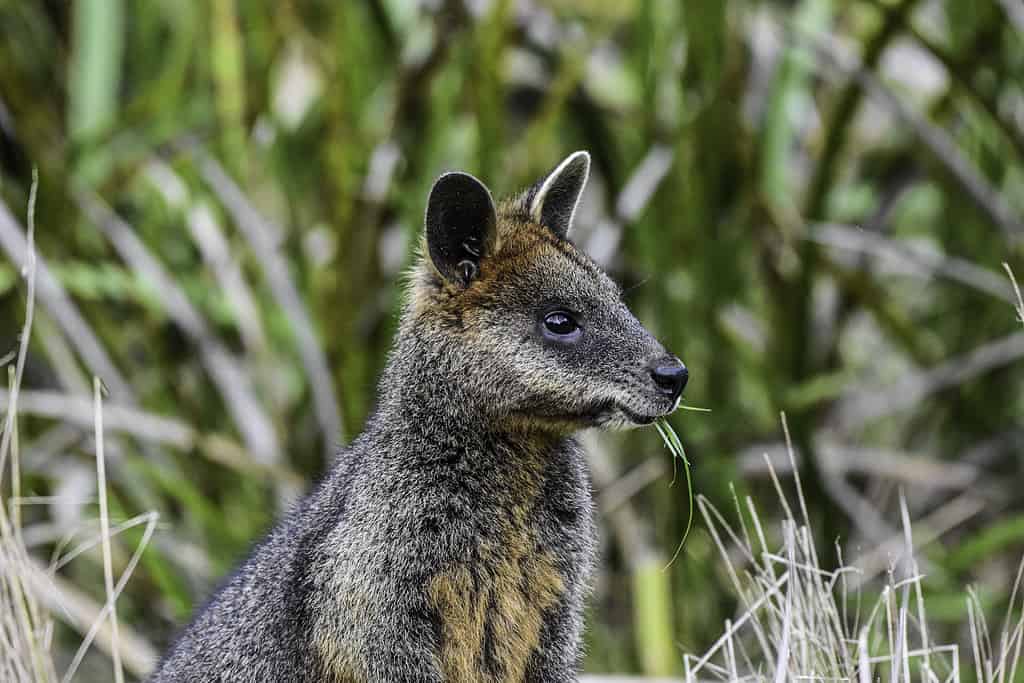
Wallabies typically eat plants, but sightings confirm that swamp wallabies aren’t always strict plant eaters.
©Kate Crock/ via Getty Images
Swamp wallabies occupy the eastern edge of Australia and are considered herbivores like the rest of its marsupial family. Wallabies typically graze on various plants, even some poisonous species like hemlock. However, sightings confirmed that this particular species is not always a strict plant-eater.
There is reason to believe that swamp wallabies are more opportunistic eaters than previously thought. Conservationists have confirmed that, in rare occurrences, wallabies will eat carrion (dead animals). Most often, they choose seabirds native to their location.
10. Divers Had to Rescue a Floating Wallaby in the Ocean
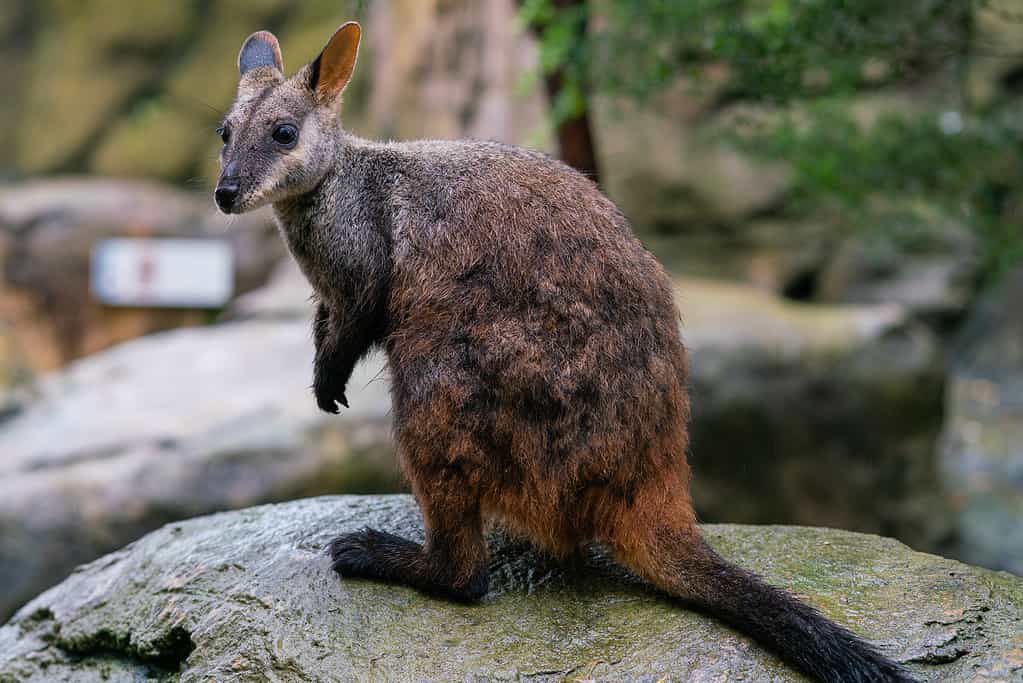
Wallabies are proficient swimmers.
©Julian Viry/ via Getty Images
A group of divers off the coast of New South Wales had to cut their trip short after they spotted a wallaby over half a mile from the shore. The poor guy was floating around on its back in the ocean, obviously tired from trying to swim.
Oddly enough, wallabies are proficient in swimming. This particular swamp wallaby must have floated farther than he thought. The rescue was difficult because adults are known to be defensive, but the group finally prevailed and brought him back safely.
Thank you for reading! Have some feedback for us? Contact the AZ Animals editorial team.

